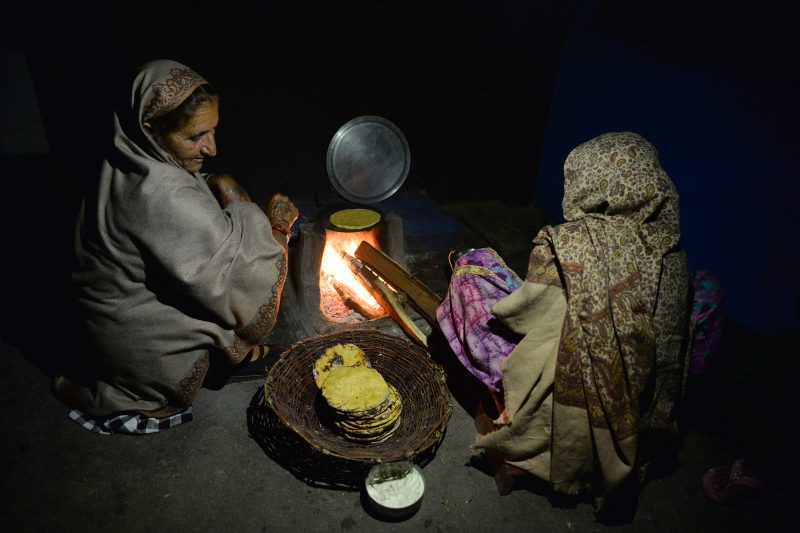Kashmir braces for the worst as shelling, gunbattles escalate
Kalal village near Nowshera has no protective shelters, and residents have been advised to turn off lights at night to avoid becoming a target for Pakistani gunners ( SAJJAD HUSSAIN )
Nowshera (India) (AFP) – Indian forces on Friday fought battles with militants in Kashmir that left seven dead, whilst being dragged into fierce artillery barrages with Pakistani rivals along the troubled territory’s angry ceasefire line.
At least one person was killed by mortar fire that has intensified in a worrying sign that Kashmir faces prolonged fallout from new hostilities between India and Pakistan.
Seven people were killed in the latest raids that have been staged virtually daily since an Islamist suicide bomber hit a convoy in the Himalayan region on February 14 killing 40 Indian paramilitaries.
Troops laid siege to a house in the Handwara district of India’s only Muslim-majority state, believing they had killed two militants inside.
However one survived, a police official told AFP. Hours after the firing stopped when security forces went in to retrieve the bodies the man emerged from debris and opened fire, killing four soldiers before he was shot dead.
A civilian was killed in later protests over the clash, the official added.
– Line of violence –
Indian and Pakistan fighter jets staged tit-for-tat raids as they wrangled over responsibility for the February suicide attack.
India blamed Pakistan, which denied any role, as it does in an armed uprising in Muslim-majority Kashmir that has left tens of thousands dead since 1989.
Pakistan’s promise to release an Indian pilot shot down in the aerial dogfight this week eased the threat of a wider conflict between the neighbours.
But there are heightened fears that Kashmir could become the focus of new tensions.
“There is a very high risk of escalation towards localised, but more intense direct Indian-Pakistani military confrontation in Kashmir,” Jane’s Intelligence service said in a study this week.
Alongside the raids, heavy mortar and artillery fire across the Line of Control — which has separated Kashmir into rival sectors since 1947 — sent residents on both sides scurrying for cover.
– Lights out, hopes fade –
One woman was killed and an Indian soldier wounded during shelling late Thursday and early Friday at the southern end of the unofficial frontier, according to police.
Three hundred people turned up for the funeral of 33-year-old Amina Akhtar who was walking in a field near the village of Chhala when shrapnel from a mortar shell pierced her neck, killing her on the spot.
“Poor people are getting killed and their homes are destroyed. We don’t want our men, women and children to die like this. We need peace,” said resident Nagina Bano, who blamed the Indian government.
Indian authorities told villages to turn off lights to avoid becoming a target for Pakistani gunners. But it did not help Surjeet Kumar, village chief at Kalal, near the town of Nowshera.
With regular explosions and gunfire breaking the night-time silence, Kumar said he was in his house when nine 120mm mortars hit.
One shell left a huge hole in the stone bedroom wall, smashing the windows and furniture. Eight other shells failed to explode.
“We want peace or an all out war. We don’t want to live in bits and pieces,” Kumar said.
“We are very scared. They are firing heavy weapons not just bullets. Yesterday Pakistani jets were flying over our village. We haven’t cooked or eaten properly since the shelling began.”
Kalal has no protective shelter and the only school has been closed for a week. Most of the children have been sent away.
With more explosions and gunfire echoing around the valley, Kumar’s wife Raj Banti said they may leave too.
“We cannot live like this. If we are given an option we would definitely leave this place forever. We are poor but still love our lives,” she said.
Disclaimer: This story is published from a syndicated feed. Siliconeer does not assume any liability for the above story. Validity of the above story is for 7 Days from original date of publishing. Content copyright AFP.


